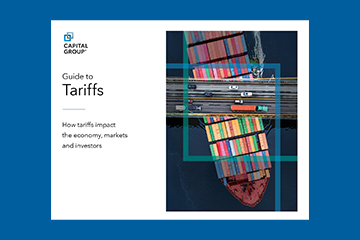To understand what happens next, it is important to ascertain the underlying reason for imposing the tariffs. If Trump is using tariffs as a negotiation tactic as seen during his first term and more recently with tariff threats to Colombia, we could see negotiations that further postpone, avoid or reduce these tariffs — as has already happened with Canada and Mexico.
As part of these negotiations, it seems likely that a review of the U.S.-Mexico-Canada Agreement (USMCA) trade pact scheduled for 2026 could be moved up to reduce North American trade uncertainty. Our base case is still that the pact survives but with significant alterations that endorse some new level of U.S. tariffs, restrictions on Chinese investment in Mexico, further tightening of the automotive rules of origin, strengthening of border security or a commitment by Mexico to attack and weaken the drug cartels.
On the other hand, the potential for these tariffs to be permanently shelved or meaningfully reduced is much less likely if the motivation is to create revenue to fund tax cuts or reduce the U.S. trade deficit. (Although Canada runs a trade deficit with the U.S., excluding oil.) In this case, tariffs are likely to go up as the countries retaliate and then may moderate as agreements are reached. Notably, the tariff negotiation and implementation process with China in 2018 and 2019 involved shifting deadlines and considerations of exclusions.
If measures like those announced on February 1 eventually go into effect, they would likely impact Mexico and Canada more than the U.S. or China. The U.S. accounts for around 80% of Mexican and Canadian exports, while Mexico and Canada account for around 15% of U.S. imports each. Furthermore, the majority of trade within the USMCA is conducted in dollars, which minimizes the ability of the Canadian dollar and Mexican peso to act as adjustment mechanisms.
That said, the U.S. is significantly reliant on specific imports, including horticultural products from Mexico and energy from Canada. Not only does Canada account for almost 20% of U.S. oil supply and more than half of total U.S. oil imports, but it is also a convenient source for U.S. importers, given the refinement infrastructure.
Modeling the impact of the tariffs relies heavily on various assumptions, but economic history suggests that both consumers and companies would be negatively impacted.
As was the case in the prior Trump administration, things are moving quickly, and it is difficult to predict how situations may change. It is unclear how long these measures will stick, even if implemented. That said, it seems likely that some level of heightened tariffs could remain for years to come. The tariffs announced February 1 appear to be an opening salvo, with more clarity on longer term policy likely to come in the weeks ahead.





